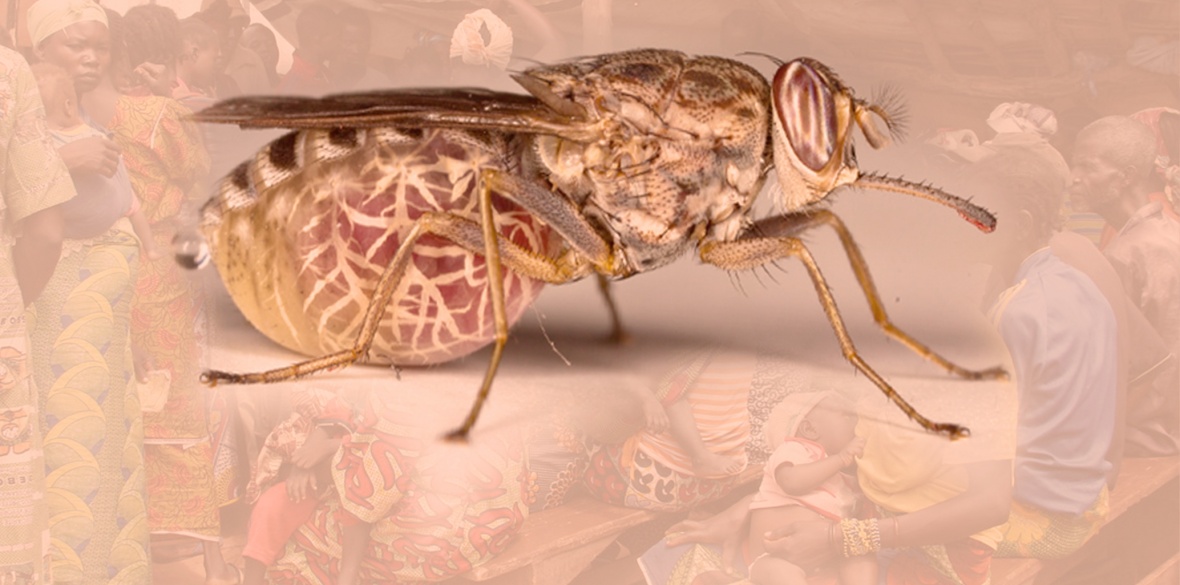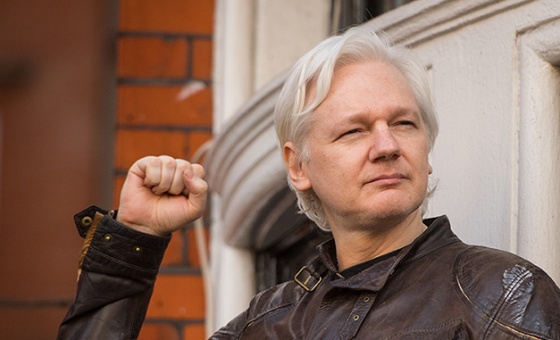This is the last article you can read this month
You can read more article this month
You can read more articles this month
Sorry your limit is up for this month
Reset on:
Please help support the Morning Star by subscribing here
HUMAN African trypanosomiasis, abbreviated as HAT, is a potentially fatal disease caused by infection with a parasite, Trypanosoma brucei. The parasite is transmitted between humans via the bite of the tsetse fly. When a tsetse fly carrying parasites bites a person, the parasitic cells enter the person’s blood. There, the parasite’s cells start to divide into two and multiply.
This initial “blood stage” infection can cause non-specific symptoms such as fever, headaches, and joint pains. These general symptoms are difficult to diagnose as trypanosomiasis. Proper diagnosis requires looking at blood that has been treated with a special staining chemical under a microscope so that the parasite cells stand out.
This lack of easily noticeable symptoms has meant that many HAT cases go undetected. This is particularly concerning because, left untreated, chronic blood-stage infections will progress to the “neurological stage.” This is when the parasites cross the blood-brain barrier and infect the brain and spinal fluid.
When the parasites progress to the brain they cause much more severe symptoms such as muscle weakness, tremors, and confusion. Infected individuals also experience very disturbed sleeping patterns, leading to the common nickname of “sleeping sickness” for HAT cases. People’s experiences include insomnia, bouts of sudden sleepiness during the day, or a totally reversed sleeping pattern, where they are awake all night and feel sleepy all day.
The neurological stage also produces psychological changes in the host, producing emotional instability and psychosis. Left untreated, it will eventually lead to death. Unfortunately, once the parasites have crossed the blood-brain barrier, treatment is more difficult.
Treatment of late-stage HAT involves drug delivery over the course of 10 days in hospital, which is often not possible for people in rural locations where the disease is most likely to have gone untreated. The drugs for the neurological stage are also more toxic with greater side effects.
Though diseases like HAT and malaria had existed in tropical regions for a long time, colonialism worsened them by increasing the movement of workers between tropical regions and port cities, cramming people together. One epidemic in Uganda beginning in 1901 raged for 20 years, killing an estimated 200,000 people.
The “sleeping sickness” had severe commercial implications for the colonial economy. As early as 1734, a British surgeon complained that the sickness rendered his slaves useless: “Whipping will scarce stir up sense and power enough to move; and the moment you cease beating the smart is forgot.”
Though doctors and scientists who worked on the disease viewed themselves as humanitarians, protecting colonial interests was a powerful motivator to find treatments. In German East Africa in 1906, Robert Koch ran trials of toxic drugs containing arsenic for HAT — the drugs caused intense pain, vomiting, and sometimes permanent blindness.
He encouraged the government to set up “concentration camps, as the English call them” to forcibly treat people against their will: many patients fled the “treatment” as worse than the disease.
Koch dreamed of a single-dose treatment. The treatments he developed, though poisonous, could work — but only if started early. Late-stage treatment required frequent painful injections over long periods.
HAT is still with us, along with the need to find a better treatment. It is designated as a “neglected tropical disease” by the World Health Organisation (WHO), which is pursuing the goal of eliminating all such diseases by 2030.
More than a century after Koch, huge gains have already been made. In 1998 there were more than 35,000 reported cases and an estimated 300,000 unreported infections. Thanks to control efforts, in 2020 there were only 663 reported cases.
These gains have mainly been achieved through efforts to detect and treat early blood-stage infections and prevent humans from coming into contact with tsetse flies. Flies can be caught in traps, killed with insecticide (which is sometimes sprayed directly onto cattle), and moved away from human habitations by clearing vegetation.
However, the problem of effectively treating late-stage neurological infections remains. Existing drugs are often repurposed: one, eflornithine, was developed as an anti-cancer drug but was found to coincidentally be effective at killing parasites.
Recently, a clinical trial in the Democratic Republic of Congo and Guinea reported encouraging results of trialling a new single-dose drug called acoziborole over a three-year period. It seems to be just as effective and safe as previous treatments.
Acoziborole was successful in 159 of the 169 patients with late-stage HAT. This effectiveness is comparable to the previous drugs used, but acoziborole had many fewer side effects. This is a welcome result.
The interesting aspect of the acoziborole study is that it was made more difficult to carry out due to African countries’ successes in nearly eliminating HAT. The small remaining numbers of late-stage HAT cases meant that the scientists running the trial could not do so in a “randomised” manner, where participants are assigned randomly to receive either the previous treatment or acoziborole.
This randomisation attempts to single out the effect of the drug from other unknown biases, such as bias in who receives the new drug compared to the old drug. But in the latest trial, there were so few cases that researchers treated everyone with acoziborole and reported the results.
Today, diseases such as HAT provide little financial incentive for large pharmaceutical companies to develop drugs. Acoziborole was developed through research co-ordinated by the Drugs for Neglected Diseases Initiative.
This body is funded by a mixture of public and private sources. However welcome these new drugs are, it’s hard not to think that in a just world, drug development for preventable diseases like HAT would have been at the top of the research agenda much longer ago, to save people’s lives and not to prop up the colonial economy.
The effort to eliminate HAT has made huge gains, but the last steps in disease elimination campaigns are usually the hardest step. Pharmaceutical treatments for diseases are a remarkable achievement.
But ultimately, success in eliminating HAT will not be merely due to “technical” solutions — as with many problems we face. Both globally and within affected countries, political will to eliminate diseases wanes as the number of cases dwindles.
HAT also happens to be endemic in countries with considerable political instability and humanitarian crises. Like HAT, these are also easy for people in rich countries like Britain to ignore.










